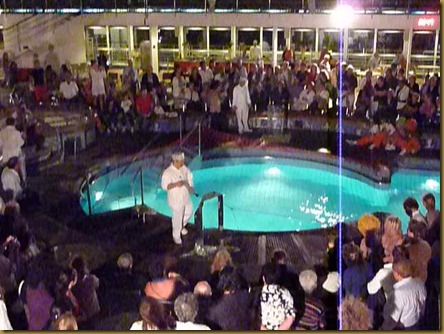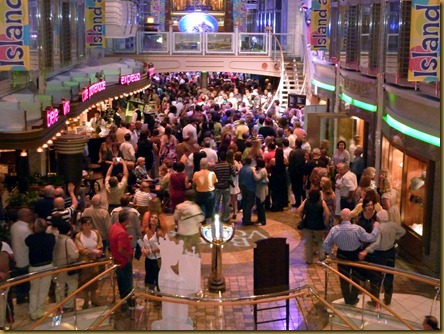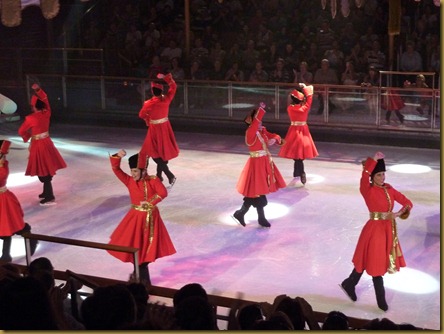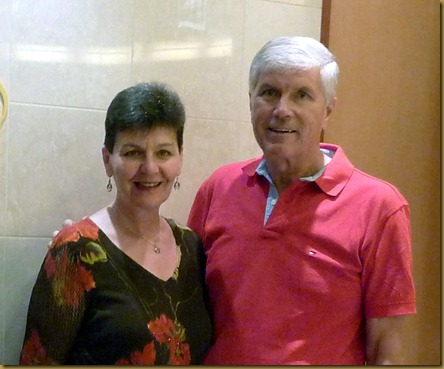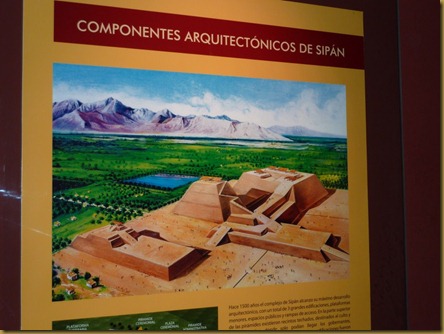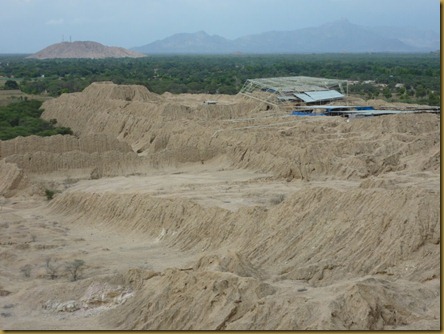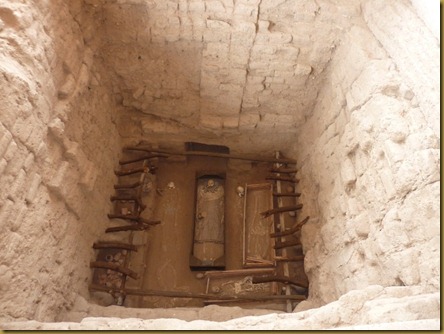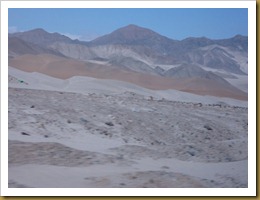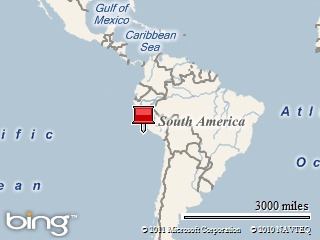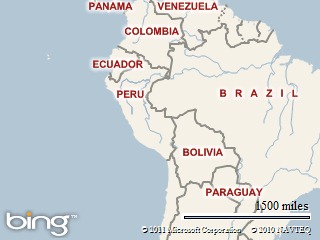Well the Mariner of the Seas docked at Civitavecchia (the port city for Rome) on March 27th and the officers had the audacity and authority to order us off the ship. We didn’t have to be told twice that we weren’t wanted, so we said goodbye to our cabin and walked bravely down the gangway. Inside the terminal Selma and Louis were hysterical. All upset because they spent the night in rather miserable circumstances in a warehouse, but we didn’t feel sorry for them because not every piece of luggage gets to visit the places they have.
Tumultuous describes the scene outside the ship, total confusion with absolutely no directions whatsoever for people doing independent travel. We escaped with Thelma and Louis following at our heels, down a narrow, busy road in the dock area where thousands of containers were stacked. Lucky us, we spotted a city bus not too far away. We asked if the bus was going to the train station in Civitavecchia and the driver nodded. Not only that but it was free! WooHoo! A few minutes later we were at the station (along with five thousand others) buying tickets to Rome Central Station (Roma Termini). The ride takes about ½ hour and then it takes another ½ hour to walk through the train station – large, very large. Our Expedia.ca prebooked hotel was a two star called the Termini, on the third floor of a building where every floor is a different budget hotel. A novel concept. We asked directions at Tourist Information and she told us exactly where to go. In no time at all we were standing outside the locked door on the third floor. A sign clearly stated that to check into the Termini Hotel we had to go to the Hotel Piram, two blocks down the street, where we would be given the keys. Oh well, Piram it would be. I asked Richard if he wanted to wait there with the luggage while I went and checked in but he thought we should stick together. It’s a good thing…plans can change you know.
‘Can you believe it, we’re in Rome!’ we said in our best cartwheel voices as we approached the Piram. We were abruptly told by Selda, the nice-looking Italian agent, that check-in time for the Termini was 2pm (it was then about 11am), could we please come back later. She also mentioned that for Termini guests, breakfast would be served in the dining room of the Piram and would cost ten Euros per person per day as it was not included in the rate. Uh oh! My soft and serene voice (ha ha) said, please look at my book! I have it written right here that breakfast is included in the rate, as per Expedia.ca. Selda said she would check on it for us. We returned at 2:00 and noticed, while we were waiting for Selda, there was lots of luggage in the lobby with cruise tags the same as ours. We had beaten the RCI transfer bus to the hotel by about two hours – the beauty of independent travel (and pure $#!& house luck). Anyway, hold on to your Vespa throttle because Selda had news. She said we would not have to go to the Termini after all, we would be staying at the Piram. We nearly fainted – an upgrade from a two to a four star hotel in central Rome? Astonishing! Worth hundreds of dollars! We were so excited at the gift we forgot to ask about breakfast. The room was lovely and we found out next morning that breakfast was included. So here are the stats: we prepaid CA$148.70 for two nights at the Termini through Expedia.ca. Breakfast cost 10 Euros per person per day – worth about CA$60 had it not been included. On the Piram Hotel website in March, a double room with breakfast cost 330 Euros per night, an astonishing amount when you consider that with exchange the room retailed for CA$450 per night plus tax. About $1,000 then, for the stay! Yee Haa what a gift, what a gift. Those Italians!! Those kind, generous, well mannered, much respected Italians! We have always loved them…. And we always will.
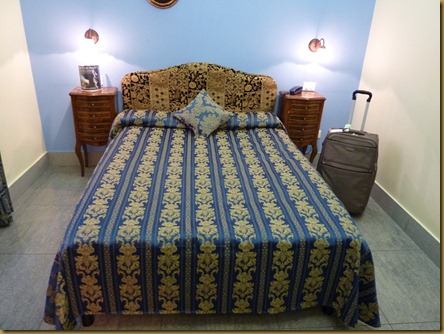
Rome was just great fun! We had been there before, in 1997 but we did not stay in a central hotel and that affected the entire visit. So here is a hint: if you ever go to Rome make sure you stay within walking distance of everything because it is time and money well spent. And while you’re at it, why not choose a lovely four star hotel instead of a more budget two star? We can recommend the Hotel Piram…. Ha ha ha ha…..
We spent three days walking and exploring the sights and sounds of Rome. There’s a lot to see so don’t go without a guide book, and make sure you enjoy pasta and wine on as many occasions as possible. We found the cost of food in restaurants was actually better this time than years ago when Italy was still on the lira. One of our favourite places was the McDonald’s Restaurant on the square near the hotel. We could sit at one of their outside tables, sip delightful and affordable cappuccino and linger for an hour or so in Italian immersion. Of course there was almost nothing Italian about it – the entire roadway around the fountain in the piazza is filled with open top tour busses laden with tourists, one after another, and all the customers sitting outside at the restaurant were tourists, and of course the place is after all, an American fast food restaurant…but the cappuccinos were sort of Italian. Ho hum.
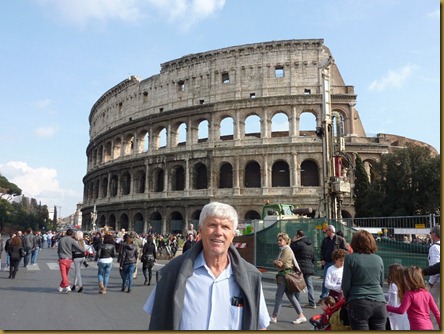
We saw more digital cameras in Rome than we saw cars. We saw more scooters than digital cameras. We saw more tour busses than scooters. Rome was busy, definitely the busiest and most touristy city of the trip. The weather was lovely, not too hot for sight seeing but warm enough to enjoy a nice lunch outside. Here’s something interesting - if you do a search on Expedia.ca for a hotel in Rome you will find they list 1,519. Expedia Paris has a few more at 1,590 but New York only lists 572 and London 914. So that is why Richard and I continually remarked at how much Rome reminded us of Paris. Every little side street we looked down in Rome presented a vision of incredible architecture, beeping horns, rushing scooters, and always two or three or four neon hotel signs off in the distance. This street, that street and that one over there, every direction you look there are little one and two star hotels with ancient elevators and tiny lobbies. The only other city we have experienced this is Paris. But I guess all those thousands of tourists have to stay somewhere, don’t they?
On our walk the first afternoon we realised just how hungry we were, so we stopped at a little bakery and bought some specialties. One of our purchases was amazing, as per the photo. The buns sold for Euro 1.50 each – about CA$2.15 and were called ‘slagliatela con rieata’ if I read the baker’s writing correctly. As you can see it was pastry that is threaded round and around somehow. So complicated we could not believe it. In fact I was chatting with an employee about them because she spoke some English, and the baker heard our conversation and magically appeared. He said proudly that those creations were made by ‘he’. Don’t know how though. Said they were filled with cheese and sweet stuff that they didn’t know the English word for.
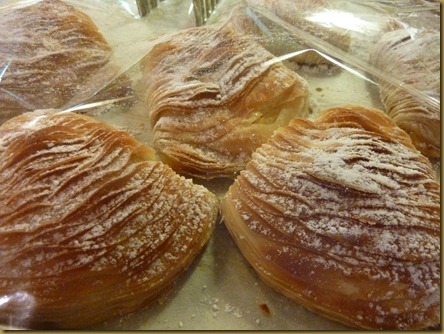
One afternoon we rode tram car number 5 from Roma Termini to the end of the line – a good way to sightsee without too much stress or expense. Well the one hour ride each way was interesting and for most of the way, very crowded. It was an eye opener because once outside Rome central, everything that can be written upon, is. Graffiti everywhere. And the suburbs we saw did not look so affluent. In the entire time we saw no single family dwellings – everyone lives in apartments.
Before long it was time to pack up Thelma and Louis for the last time and say Arrivederci Roma. March 29th we caught a 4pm train to the Airport and waited for our 8pm Easy Jet flight to Gatwick. We locked Thelma and Louis to one of the long benches at Gatwick airport and hung out for the night. I mean we slept – who needs a hotel!
March 30, 2011 we caught the 10:50am Thomas Cook flight to Calgary. At lift off the TV monitors in the plane read ‘distance to Calgary 7061 kms with a scheduled arrival time of 1:25pm. We were very excited to get together with the family again, especially the grandkids. But we were sad too. That’s the reality of travel.
On arrival in Calgary we collected Thelma and Louis from the carousel and walked outside to catch the city bus to the train station. Then it was the C-train to downtown. Exactly the way we started five months ago. The no taxi rule was still in effect.
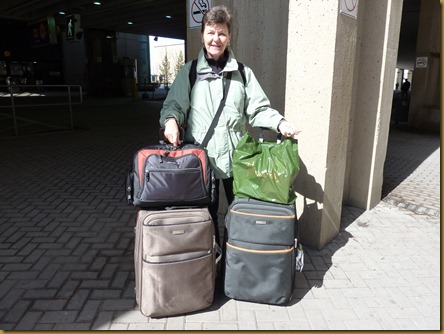
About those taxis – for all the whining and complaining our taxi expenses on the entire trip, not counting the vouchers we were given in Calgary by Air Transat, ran about CA$177.00. This does not count regular transportation like subway tickets, bus tickets, bus transfers, train transfers, etc., only taxis. I tried to keep an honest count but may have missed a couple.
Best Meal
- for Richard it was a spectacular cannelloni pasta dinner with pork tenderloin cooked by Vi and Dave at Santa Marianita Beach
- for Donna it was a prepared quiche we bought at a grocery store in Benidorm that we heated ourselves, served with a fresh salad and a glass of Spanish wine. 100% wonderful on the 14th floor balcony at sunset
Most Memorable Cup of Coffee
- for Richard it was in Quito at a little restaurant. A pot of hot milk and a jar of instant coffee, make your own at the table. Doesn’t sound that good but it was remarkably delicious.
- for Donna it was an Italian espresso we stopped to enjoy on our excited walk to the port from the train station in Savona. Thelma and Louis had to wait for us inside the coffee shop.
Most Memorable Breakfast
- for both of us it was a bag of the biggest, flakiest, crunchiest, freshest croissants to ever come out of an oven. The bag of croissants and two bottles of water cost CA$1 and we enjoyed the lot while sitting in the sunshine on the steps of an historic church in Quito
Most Memorable Beer
- same for both of us. The first beer of the trip after hours of travel. We stepped off the bus in Benidorm and joined dozens of Brits who were sitting at outdoor pubs, enjoying the sun, enjoying life
Favourite Bottle of Wine
- Richard and Donna agree this one is a tie – sunset on Santa Marianita Beach tied with the bottle of wine on the promenade of the Mariner of the Seas during a formal night fashion show
Most Unusual Person we Met
- no doubt about it, Linda from Santa Marianita Beach gets both our votes
Worst Meal
- without a doubt, the unbelievably bad pasta dinner at the Inte Hotel in Chiclayo gets both our votes
Favourite Hotel
- for Richard it was the Continental Hotel in Guayaquil – and he loved the breakfast that went with it
-for Donna it was the gorgeous Boutique Hotel Plaza Sucre in Quito – at CA$45 per night with taxes and breakfast it surely was the bargain of the trip.
-second choice for both was the Hostal el Patio in Lima, Peru
Favourite Seaside Promenade
- no doubt about it, Benidorm wins hands down
Favourite City
- we agree on this one too. Lima takes first place, but Rome is a close second
Favourite Tourist Sight
-For Richard it was all the decaying ancient ruins around Chiclayo, Peru
-For Donna it had to be Corcovado – the statue of Christ in Rio de Janeiro
-Another hit for both was the start of the Dakar Race in Buenos Aires
Favourite Cruise
- the jury is still undecided on that one. We are going to have to take many more cruises to answer that correctly

